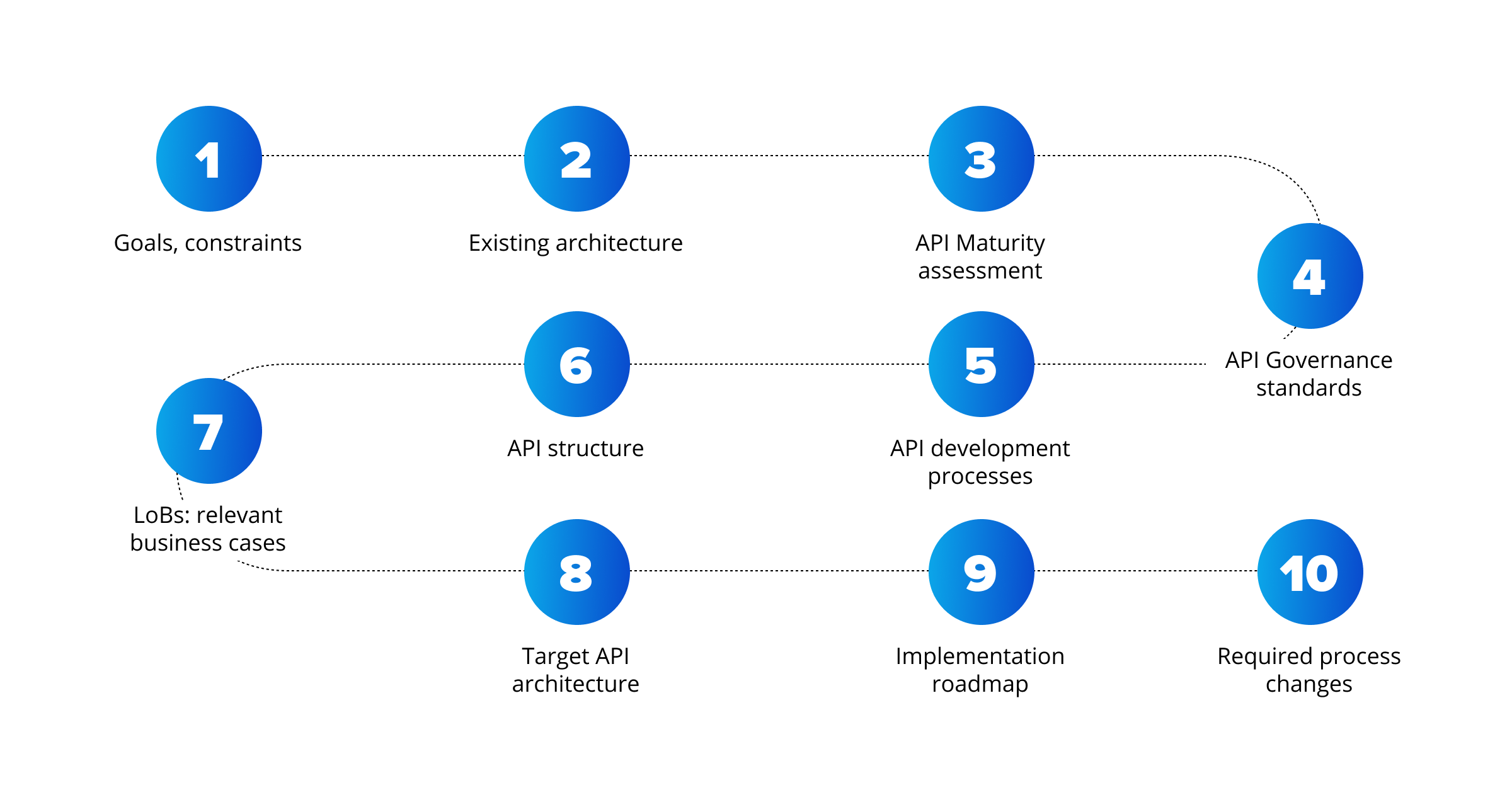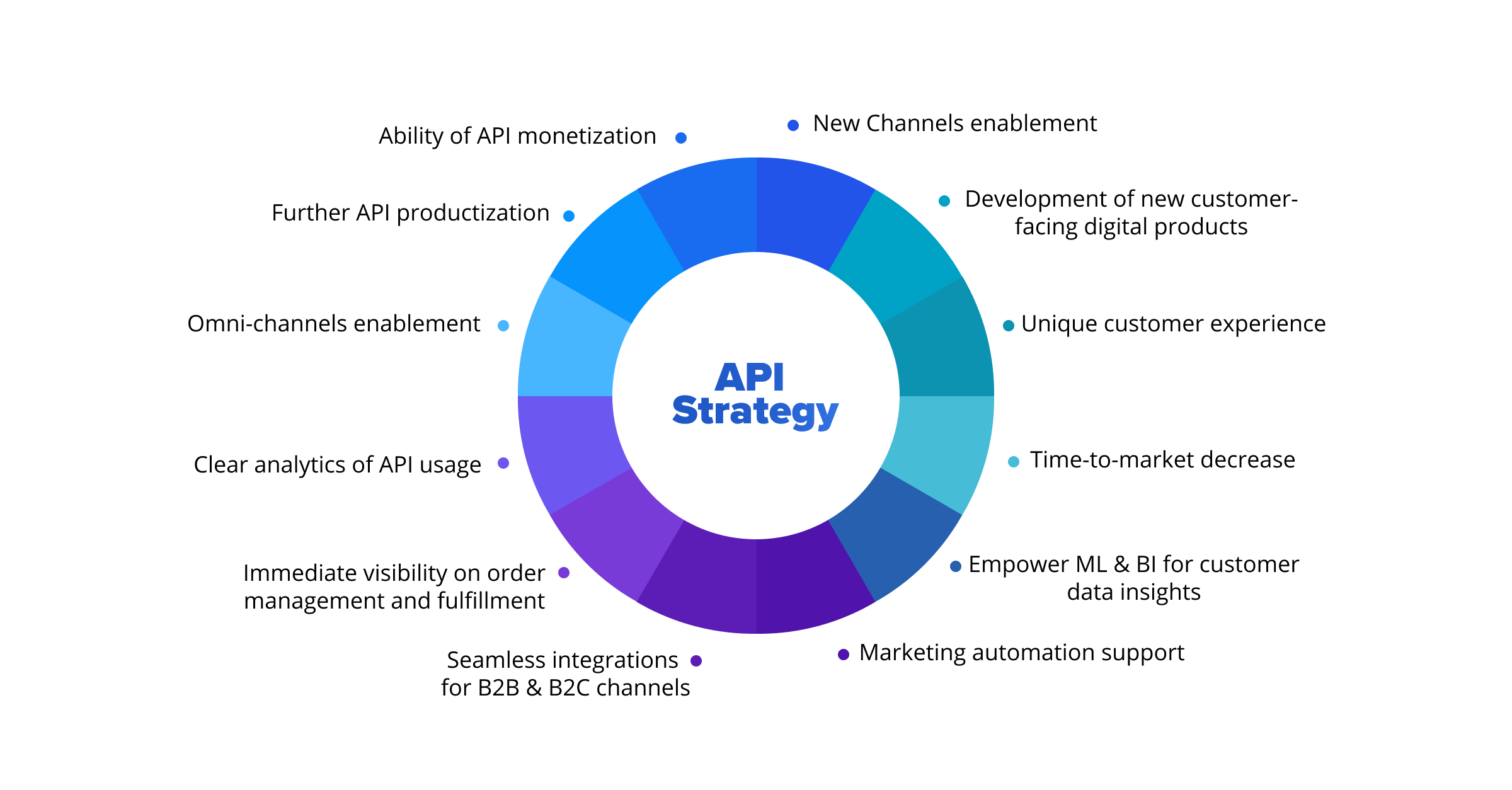
In part one of this series, we discussed why an API strategy plays a key role for a company’s strategic business processes, what the building blocks of a successful strategy are, and what are the essential stages of the API maturity model.
In this post, we take a sneak peek into SoftServe’s process of providing API-related offerings to build an effective and well-thought-out API strategy for our clients. This process requires tough collaboration and multiple workshops with business representatives.
Usually, it needs to complete the following 10 steps:

Let’s look at each one of them.
Step 1: Experts start with the definition of the goals and the constraints analysis.
Step 2: The team performs a deep dive into the existing architecture.
Step 3: Having this information available, experts are ready to conduct the API maturity assessment survey with the representatives of different lines of business (LoB).
Step 4: After the assessment survey, the team identifies current and target API Governance standards, policies, best practices, and frameworks. This includes the analysis of which required tools to use.
Step 5: Later, experts analyze and model the API development processes to enrich the company’s product life cycle by optimizing the steps of API development.
Step 6: The team develops a proposal for the team structure (organization roles and responsibilities) to enable the API implementation.
Step 7: The team collaborates with different LoBs to identify relevant business use cases when APIs can be used to bring maximum value for the company as soon as possible. This is considered a major step in the process.
Step 8: Experts develops the target API architecture to cover the client’s needs.
Step 9: Based on the above findings, the team builds the roadmap for further implementation. Usually, it includes the initial company’s alignment on API strategic initiative, API enablement (building of the API management/integration platform), and API-related initiatives for different LoBs.
Step 10: Lastly, the team performs key process changes, holds training sessions, and establishes a communication strategy to ensure the API strategy is properly implemented and APIs are being used as intended to maximize ROI.
The whole process takes up to 2 months and brings outstanding results that allows our clients to make valuable changes and start their new digital era.
Recently, a global medical products and technologies company approached our company to help build the technical solution to ensure their technical processes meet the required FHIR standards on the highly regulated healthcare market. Having the API management platform available, the company started to think how to enrich its full potential. After discussions with business representatives, our experts investigated multiple opportunities for their B2B and B2C channels:
- Leverage API to engage new channels, develop new customer-facing digital products, provide a better customer experience for existing digital products, and decrease time to market
- Leverage the API platform to empower ML and BI for customer data insights and marketing automation
- Providing different integration type for the B2C channel to enable immediate visibility on order management and fulfillment
- Optimize integrations with different internal and external systems
- Enable new services for customers
- Enable multi-channels
- Get ideas for further API productization and monetization

After the short discovery phase with SoftServe, the client received multiple promising new digital opportunities and has started to grow its competitive advantage on the market.
We hope you have found this series to be informative and helpful as we’ve covered the considerations for business leaders to develop an effective API-driven strategy.
Let’s talk about your API implementation journey and how SoftServe can help you increase productivity, decrease operational costs, and create superior digital experiences – all at scale.

